On August 6, 1945, an American B-29 bomber named the Enola Gay, left the island of Tinian for Hiroshima, Japan. This mission was piloted by Col. Paul Tibbets. Hiroshima was chosen as the primary target since it had remained largely untouched by the bombing raids and the bomb's effects could be clearly measured.
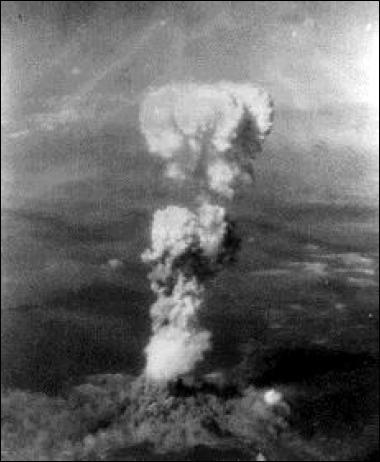
The U-235 gun-type bomb, named Little Boy, exploded at 8:16:02 a.m. In an instant 80,000 to 140,000 people were killed and 100,000 more were seriously injured.
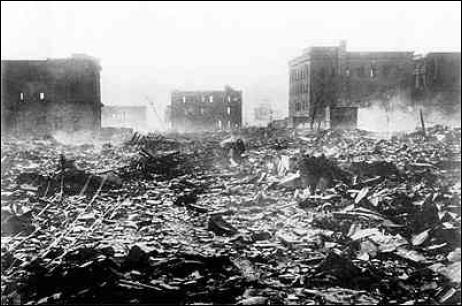
In essence, the Little Boy design consisted of a gun that fired one mass of uranium 235 at another mass of uranium 235, thus creating a supercritical mass. A crucial requirement was that the pieces be brought together in a time shorter than the time between spontaneous fissions. Once the two pieces of uranium are brought together, the initiator introduces a burst of neutrons and the chain reaction begins, continuing until the energy released becomes so great that the bomb simply blows itself apart. This image below is a replica of the bomb that was dropped over Hiroshima, Japan on August 6, 1945.
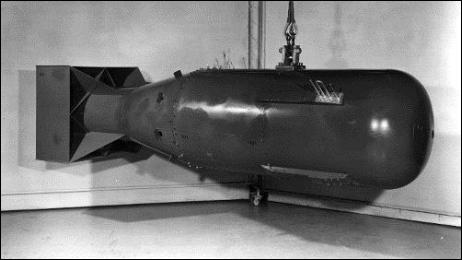
Little Boy Specifications Length: 10 feet 6 inches (3.2 meters) Diameter: 29 inches (74 cm) Weight: 9,700 lbs (4400kg) Yield: 12.5 kilotons
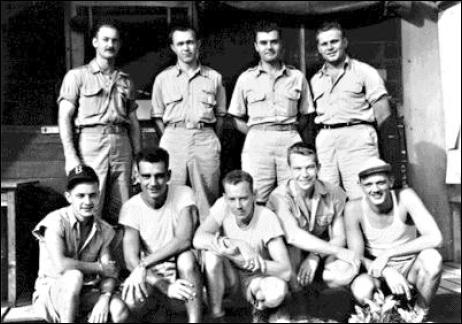
[back row (L-R) ] Major Ferebee, Captain Van Kirk, Colonel Tibbets, Captain Lewis, Staff Sergeant Caron, Sergeant Stiborik, Staff Sergeant Duzenbury, Private First Class Nelson, Sergeant Shumard
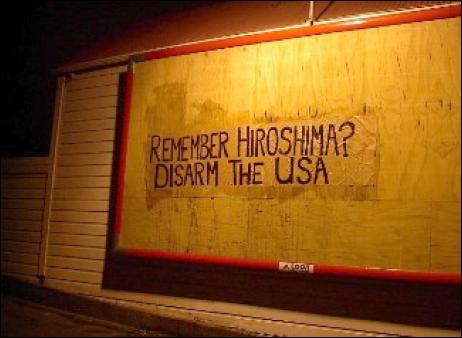
Protest Billboard in Wellington
Images Below: 'Food Not Bombs' stall at Victoria University, Wellington NZ, commemorating the anniversary of the bombing of Hiroshima.
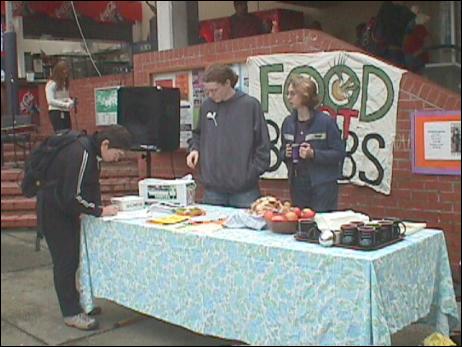



 Gordon Campbell: On The Making Of King Donald
Gordon Campbell: On The Making Of King Donald Binoy Kampmark: Rogue States And Thought Crimes - Israel Strikes Iran
Binoy Kampmark: Rogue States And Thought Crimes - Israel Strikes Iran Eugene Doyle: The West’s War On Iran
Eugene Doyle: The West’s War On Iran Richard S. Ehrlich: Deadly Border Feud Between Thailand & Cambodia
Richard S. Ehrlich: Deadly Border Feud Between Thailand & Cambodia Gordon Campbell: On Free Speech And Anti-Semitism
Gordon Campbell: On Free Speech And Anti-Semitism Ian Powell: The Disgrace Of The Hospice Care Funding Scandal
Ian Powell: The Disgrace Of The Hospice Care Funding Scandal